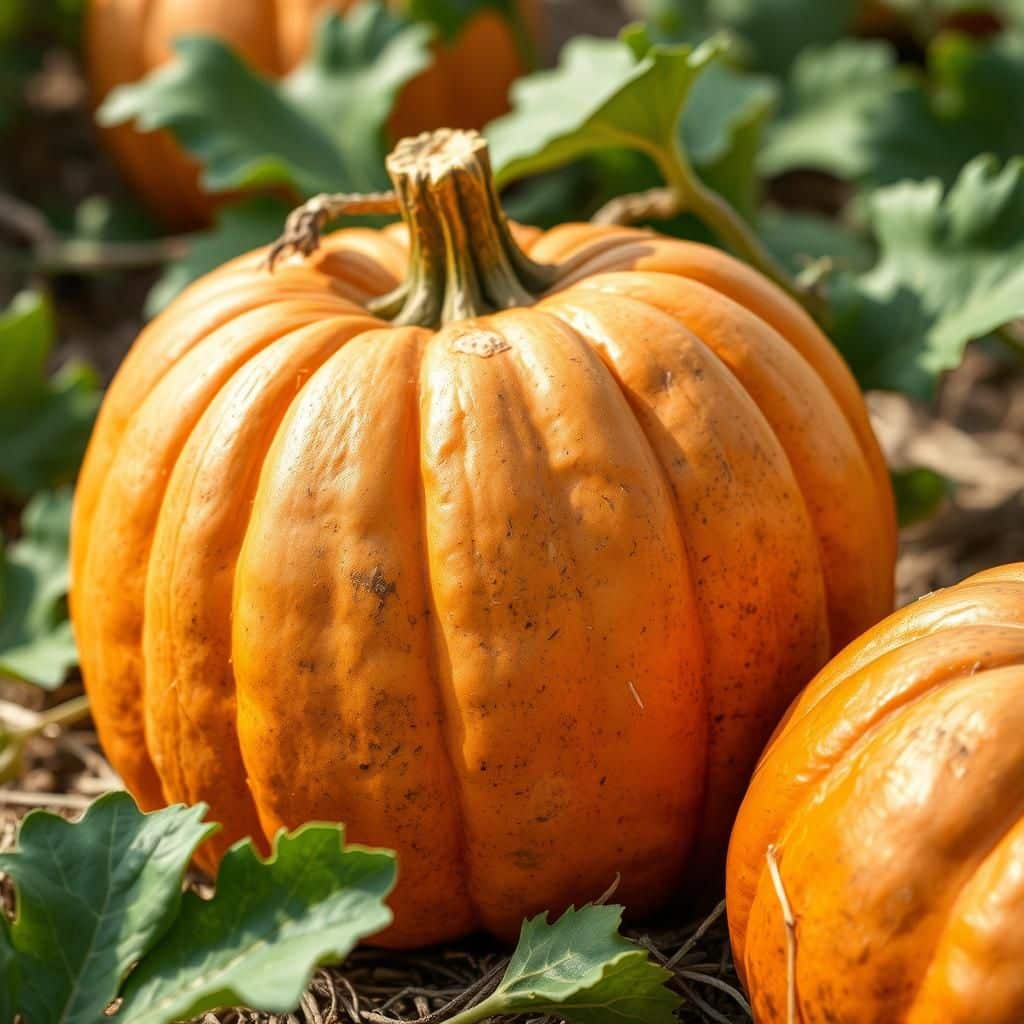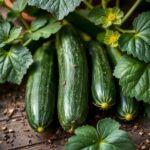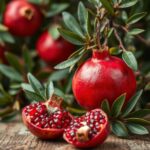When is a Pumpkin Ready to Pick? Essential Tips for the Perfect Harvest

As autumn approaches, the vibrant colors of pumpkin patches come into view, signaling the excitement of harvest season. However, knowing when to pick your pumpkins is crucial for achieving the best flavor and longevity. Harvesting too early can result in lackluster taste and texture, while waiting too long may lead to overripeness or damage. This article will explore essential tips and signs to look for to ensure your pumpkins are perfectly ripe. From assessing their color and firmness to understanding the best picking techniques, you'll be well-equipped to enjoy a successful pumpkin harvest this season.
When is a Pumpkin Ready to Pick?
Determining when a pumpkin is ready to pick involves observing its color, size, and hardness. Generally, pumpkins should have reached a deep, solid orange hue, indicating they are ripe. Additionally, the fruit should feel heavy for its size, suggesting it is fully mature. One effective method to check their readiness is by performing the thump test—lightly tapping the pumpkin should produce a hollow sound, signifying it has developed properly. Ideally, pumpkins are harvested before the first frost, as this can adversely affect their texture and flavor.
Color Changes in Pumpkins
The color is one of the most prominent indicators that a pumpkin is ripe. Most pumpkins change from a green tint to a vibrant orange as they mature. Depending on the variety, it’s essential to wait until your pumpkin displays the usual coloration typical for that specific type. For example, while many pumpkins should be a consistent orange, others like the White Cinderella or the Casperita will exhibit different hues when ready.
Size and Shape Considerations
In addition to color, the size and shape of the pumpkin are critical factors in determining its readiness. A pumpkin should have reached its full size which varies depending on the variety. For instance, large pumpkins like the Atlantic Giant will naturally be much larger than smaller decorative types like the Jack Be Little. Inspecting the shape is also important; pumpkins should have a uniform roundness and no visible indentations or deformities.
Checking the Stem
Another reliable method to assess pumpkin readiness is examining the stem. A ripe pumpkin will typically have a brown, woody stem that is difficult to cut through. If the stem is still green and supple, the pumpkin may not yet be ready for harvest. An intact stem can also extend the pumpkin's freshness post-harvest, as it helps to keep moisture inside while preventing rot.
See also:
Skin Hardness Testing
Checking the skin hardness is an essential step in determining pumpkin readiness. The skin should feel firm and solid to the touch, meaning that the pumpkin is mature and will withstand handling without bruising easily. Pressing your fingernail into the skin should not leave a noticeable mark; if it does, the pumpkin is likely still too immature and may not store well after being picked.
The Thump Test
The thump test is a practical and effective method for checking if a pumpkin is ready to be harvested. By lightly tapping the pumpkin with your knuckles, a dull, hollow sound indicates that the pumpkin is mature. If the sound is high-pitched or resonates fuller, it suggests immaturity. This test can help growers ensure they are harvesting pumpkins at their peak ripeness for the best flavor and texture.
| Indicator | Description |
|---|---|
| Color | Deep orange hue for most varieties |
| Size | Fully developed according to variety |
| Stem | Brown and woody, not green and flexible |
| Skin Hardness | Firm, with no marks from fingernails |
| Thump Test | Dull sound indicates maturity |
Signs of a Ripe Pumpkin for Harvest
Determining the right time to harvest your pumpkins is crucial for achieving the best flavor and texture. A pumpkin is considered ripe when its skin is hard and shiny, unable to be easily punctured with a fingernail. Additionally, you should check that the stems are dry and woody, indicating the fruit has stopped taking nutrients from the vine. The color should be consistent for the variety you are growing, and ideally, it should have a vibrant hue. Harvesting too early can lead to poor taste and shorter shelf life, while waiting too long may cause the pumpkin to rott or deteriorate.
Checking the Color of Your Pumpkin
The color of your pumpkin is one of the primary indicators of its ripeness. Different pumpkin varieties exhibit a range of colors, from deep orange to muted shades of green. When assessing if your pumpkin is ready, ensure that it has reached the expected color for its type. A consistent color across the fruit indicates that it is no longer growing and has reached optimal ripeness, ready for harvest.
Assessing the Stem Condition
The stem of the pumpkin is a critical component to examine before picking. A healthy and ripe pumpkin will have a stem that is dry and hard, generally turning brown to tan in appearance. If the stem is still green and pliable, it suggests that the pumpkin is not yet ready for harvest as it may still be dependent on the vine for nutrients. A well-established stem indicates the fruit's readiness and helps prevent spoilage post-harvest.
See also:
Testing the Skin Toughness
The toughness of the pumpkin's skin is a vital sign of ripeness. By gently pressing your fingernail into the skin, you can assess whether it is thick and hard. If the nail does not leave a mark, the pumpkin is likely ready to be picked. Conversely, if it easily penetrates the skin, the pumpkin may be under-ripe. This test provides a quick and effective way to ensure you are harvesting at the right time for maximum flavor and longevity.
Evaluating the Shape of the Pumpkin
The shape of the pumpkin can also reflect its ripeness. A well-formed pumpkin should have a rounded and symmetrical shape, depending on the variety. Irregularities or defects in shape can indicate problems during growth and might affect the quality of the pumpkin. An ideally shaped pumpkin typically signifies that it has matured properly and is in prime condition for harvesting.
Monitoring the Days to Maturity
Each pumpkin variety comes with a set number of days to maturity, usually indicated on the seed packet. Tracking this time frame is essential for understanding when to expect your pumpkins to be ready. Most varieties develop between 75 to 120 days after planting, depending on the type. Monitoring this timeline will help you plan your harvest effectively and ensures that you are observing your pumpkins for other signs of ripeness as the anticipated harvest date approaches.
Questions from Our Readers
When is a pumpkin ready to pick?
A pumpkin is generally considered ready to pick when it has reached its full color and its skin is tough. Typically, this occurs about 90 to 120 days after planting. It’s important to check that the stems are brown and hard, indicating that the pumpkin has matured properly.
How can you tell if a pumpkin is ripe?
To determine if a pumpkin is ripe, look for a deep, uniform color and ensure that the skin is firm and cannot be easily punctured with your fingernail. A pumpkin that has a dull appearance is often more mature than one that is shiny.
See also:
What signs indicate a pumpkin is overripe?
An overripe pumpkin will often exhibit signs such as soft spots, wrinkles, or decay on the skin. Additionally, if the stem is dry or decayed, the pumpkin may no longer be good for picking and should be avoided.
Can pumpkins still ripen after being picked?
Yes, pumpkins can continue to ripen after being picked, especially if they are still close to maturity. Placing them in a warm, dry location can encourage further ripening, but it’s crucial to remember that they may not develop the same level of flavor as those picked at peak ripeness.

If you want to read more articles like When is a Pumpkin Ready to Pick? Essential Tips for the Perfect Harvest, we recommend you check out our Seeds category.
Leave a Reply
Related Articles